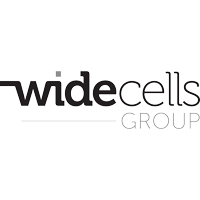Professor Peter Hollands, WideCells Group Chief Scientific Officer, gives an overview of the principles of Regenerative Medicine:
Regenerative Medicine is nothing new. It has been practised since the first bone marrow transplant in the 1950s to treat leukaemia. The pending realities of 21st century Regenerative Medicine, however, are extremely exciting. It could offer a future of significantly reduced pain and suffering for millions worldwide.
As a Professor of Regenerative Medicine I have many responsibilities. Not least in driving cutting edge research at the WideCells Institute of Stem Cell Technology to ensure the quality and safety of any future Regenerative Medicine technologies.
I also ensure that our students understand the potential and current limitations of Regenerative Medicine. It is important they know this, so they can take this knowledge forward in future to help their patients and, hopefully, to further develop and enhance this important area of medicine.
In order to understand the potential and limitations of Regenerative Medicine it is first necessary to understand the basic principles of Regenerative Medicine.
Principle Number One
The first principle of Regenerative Medicine is that it involves stem cells to either repair or replace diseased tissue. This is in complete contrast to our current practice of clinical medicine where the focus is on the use of pharmaceuticals (largely naturally occurring chemicals or sometimes chemicals with human modifications) to treat disease. The pharmaceutical approach, broadly speaking, treats the symptoms or external causes of the disease rather than replacing or regenerating the diseased tissue which is the basis or result of the disease.
The pharmaceutical approach to the treatment of disease has, without any doubt, saved millions of lives in the past 150 years. But it could still be argued that this approach is a relatively primitive route to clinical practice in the 21st century. The advent of anaesthetic drugs has enabled amazing surgical procedures to become routine and antibiotics continue, despite microbial resistance, to save lives on a daily basis. There are, however, many side effects and complications of introducing such chemicals into the body which can range from mild to life-threatening.
Regenerative Medicine introduces a totally new way of thinking about and treating disease.
- For example, a patient with a broken bone which refuses to heal may undergo many surgical procedures and still not achieve bone healing. The Regenerative Medicine approach to this problem would be to give the patient bone-forming stem cells which naturally repairs the broken bone.
- The patient suffering from diabetes would receive insulin secreting stem cells to cure the disease and avoid a lifetime of insulin injections and diabetes-related complications.
- A person with heart failure would receive cardiac muscle stem cells to replace the damaged cells rather than resorting to a heart transplant.
The list is never ending but the basic concept is clear.


